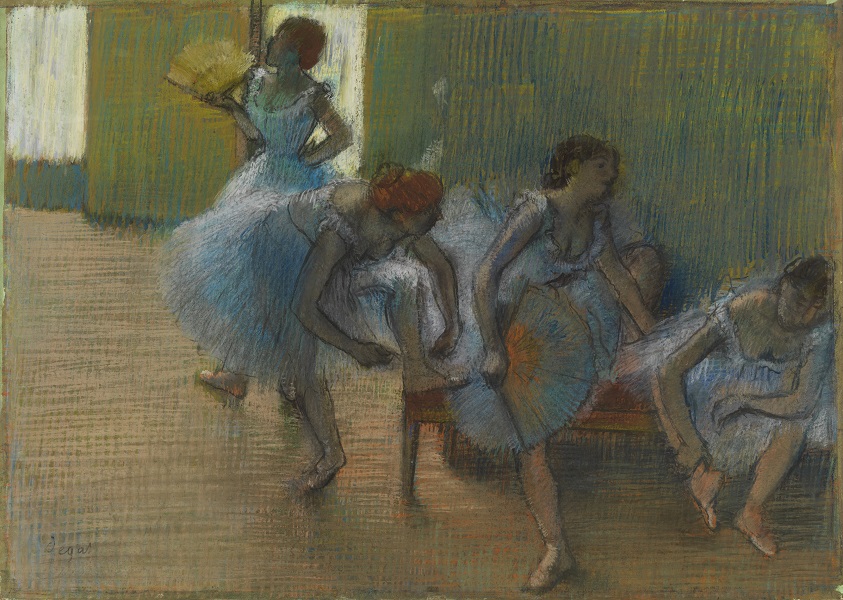 Now open at London’s Royal Academy of Arts, Impressionists on Paper: Degas to Toulouse-Lautrec explores how Impressionist and Post-Impressionist artists in late 19th -century France radically transformed the status of works on paper.
Now open at London’s Royal Academy of Arts, Impressionists on Paper: Degas to Toulouse-Lautrec explores how Impressionist and Post-Impressionist artists in late 19th -century France radically transformed the status of works on paper.
Featuring 80 works on paper by artists including Mary Cassatt, Paul Cézanne, Edgar Degas, Paul Gauguin, Claude Monet, Berthe Morisot, Pierre-Auguste Renoir, Henri de Toulouse-Lautrec, Vincent van Gogh and more, the exhibition considers how, during this period, drawings, pastels, watercolours, temperas and gouaches were increasingly perceived as more than just preparatory techniques, and became autonomous works of art.
The avant-garde artists known as the Impressionists came to prominence during the late 1860s and early 1870s, first exhibiting in Paris as a group in 1874. They chose to depict scenes from everyday life and to address contemporary issues, which encouraged them to challenge traditional attitudes to drawing and seek innovation. Testament to this, the eight Impressionist exhibitions held in Paris between 1874 and 1886 included a large number of works on paper and reflected their shift in status.
This exhibition opens with works from the early years of Impressionism (the 1860s and 1870s), including Degas’ Woman at a Window, 1870-71 (The Courtauld, London (Samuel Courtauld Trust)), executed in essence (oil paint diluted with turpentine), and a delicate study in pastel by Gonzalès, entitled The Bride, 1879 (Private collection).
The exhibition continues with an examination of the 1880s, when the Impressionists held their last group exhibition in Paris. Works in this section include van Gogh’s The Fortifications of Paris with Houses, 1887 (The Whitworth, The University of Manchester), combining graphite, chalk, watercolour and gouache, and one of Monet’s luminous landscapes in pastel, Cliffs at Etretat: The Needle Rock and Porte d’Aval, c.1885 (National Galleries of Scotland, Edinburgh).
The exhibition concludes with works from the 1890s and 1900s, which saw an ever-growing appreciation of works on paper and a proliferation of exhibitions of the medium. It was also a golden age of pastel, exemplified in Degas’ Dancers on a Bench, c.1898 (Glasgow Life Museums, Glasgow), one of his last renderings of a ballet scene.
The exhibition sets out to show how, as a result of innovations made by Impressionist and Post-Impressionist artists in their drawings, the hierarchical distinction made between painting and drawing ceased to exist, allowing the world to be depicted in more imaginative ways and leading to developments in 20th -century art such as Abstract Expressionism.
Impressionists on Paper: Degas to Toulouse-Lautrec is now open at the Royal Academy of Arts (until 10 March 2024). For further information: royalacademy.org.uk
Smith Greenfield is an independent insurance broker specialising in insurance for exclusive lifestyles and collectors of valuable objects including: art insurance, antiques insurance, jewellery insurance, watch insurance, vintage car insurance, fine wine insurance and more. To discuss specialist insurance for your lifestyle, please contact our Premier Client Adviser, Imran Moideen: imran.moideen@smithgreenfield.co.uk
Image: Edgar Degas, Dancers on a Bench, c. 1898. Pastel on tracing paper, 53.7 x 75.6 cm. Lent by Glasgow Life (Glasgow Museums) on behalf of Glasgow City Council. Bequeathed by William McInnes, 1944. Photo: © CSG CIC Glasgow Museums Collection

